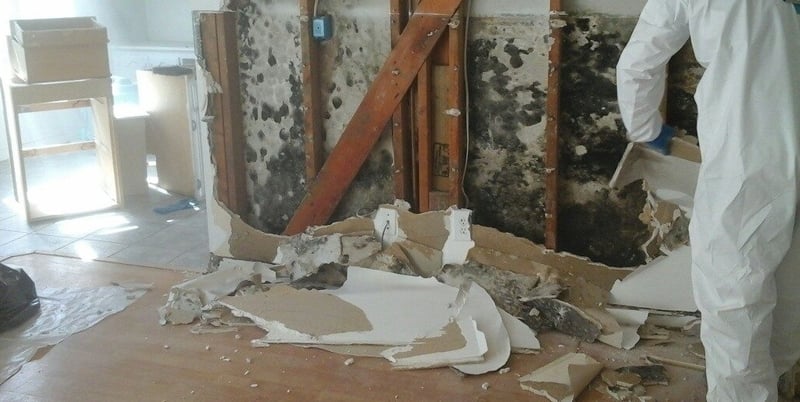Mold vs. Mildew: What is the Difference?
Mold and mildew are both different types of fungus that are often found in moist or damp areas of the home. Both fungi spread very quickly and survive on tons of different surfaces. Though mold and mildew share a lot of the same characteristics, the two are very different and require completely different treatments to remediate. You must know the differences and dangers of mold and mildew in order to plan an effective removal strategy.
The Differences Between Mold And Mildew
Mold is a fungus that appears black or green and penetrates the affected area deeper than just the surface. It’s common for mold to grow on rotting food, or inside a structure, like the walls inside a home. Mildew, however, is a surface level fungus that can be easily removed from affected surfaces. Mildew is typically found in damp areas around the home growing on organic surfaces like paper or fabric.
Types Of Household Mildew
Downy Mildew
Downy mildew is most commonly found growing on fruits or vegetables. It can appear in many different forms, but most commonly, downy mildew will begin as yellow spots that eventually turn brown. Downy mildew is often found on grapes.
Powdery Mildew
Powdery mildew grows in gray or white spots then will eventually turn light brown or black as it grows. The texture of powdery mildew may appear fluffy or powdery, as the name suggests.
Types Of Household Mold
Aspergillus
Aspergillus is the most common type of mold that is found in the home. It can appear in various different colors including black, yellow, green, white, gray, and brown. Aspergillus is most commonly found growing on and inside walls, insulation, and clothing. If the mold is left untreated it can lead to serious health problems, such as respiratory infections in the lungs, fevers, or asthma. This mold is especially dangerous for people who have a weakened immune system, such as children or elderly people.
Alternaria
Alternaria is often found in, but not limited to, structures that have recently experienced water damage. This mold can be found virtually anywhere with elevated humidity levels such as showers, under sinks, walls, doors, and window sills. Alternaria can appear in various different colors including black, gray, or brown. The most common symptom associated with Alternaria is respiratory congestion and potential asthma attacks.
Cladosporium
Cladosporium is a unique type of mold because it can grow in colder climates. Cladosporium usually appears black or dark green and can cause symptoms similar to a respiratory infection. It is most known for growing on different textiles in the home, like curtains or carpets. It will also grow on cabinetry and wooden floorboards.
Penicillium
Penicillium can grow on nearly any surface that has been affected by water. It will appear as blue or green in color and release strong musty odors. This mold will evoke allergic reactions upon exposure.
Stachybotrys Chartarum
Stachybotrys Chartarum, or black mold, is the most dangerous and toxic kind of mold that can grow in your home. It usually appears black in color, but it can also be green, grey, brown, or even purple. The toxic properties in black mold can cause breathing problems, allergies, asthma attacks, chronic sinus infections, fatigue, and even depression. It is usually found growing in areas that are consistently damp, like air conditioning systems or leaking pipes.
Mold Damages vs. Mildew Damages

Mold can completely destroy the structure of a home if it is left untreated. In addition to property damages, mold can also have extremely negative health effects. The most common symptoms of mold exposure include allergies like sneezing, itchy eyes, and throat, and runny nose, respiratory issues, heart complications, depression, fatigue, and migraines. Exposure to mold is particularly dangerous for children and others with weakened immune systems.
Mildew, on the other hand, is most often found on plants or food crops, but it can also grow inside the home. Mildew is far less harmful than mold, but when exposed, the mildew can cause sore throat, headaches, coughing, and sometimes, upper respiratory problems.
When To Call For Help
If you discover mildew growing in the bathroom or other places around the home, it is fairly easy to clean and disinfect with bleach because it is a surface level fungus. However, if you have discovered mold in your home, we suggest seeking professional help. Though some molds may appear to only be living on the surface of an affected area, the damages are most likely more complicated.
Mold is a very serious issue and should be remediated as quickly as possible. Do not hesitate! Call the mold remediation specialists at ServiceMaster Restore. We will inspect and identify all mold inside the structure, then we will treat and remove accordingly.

